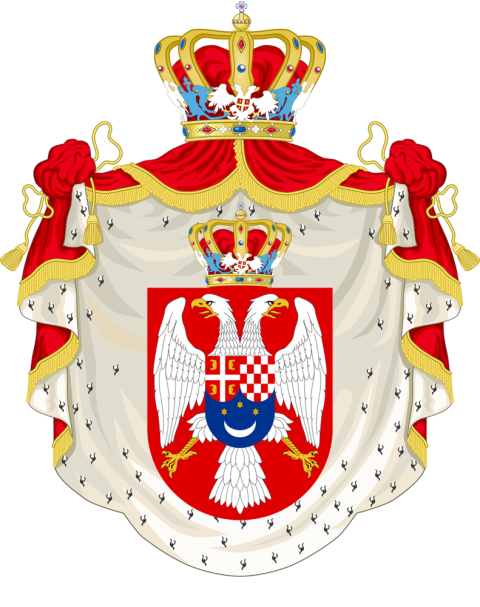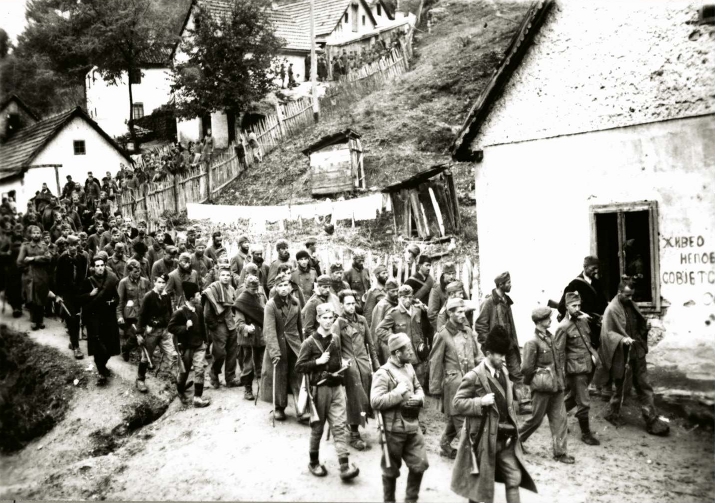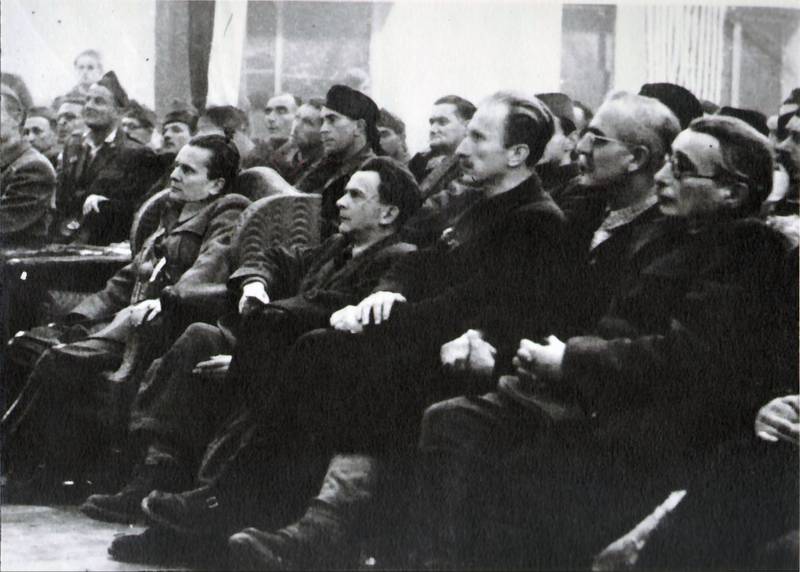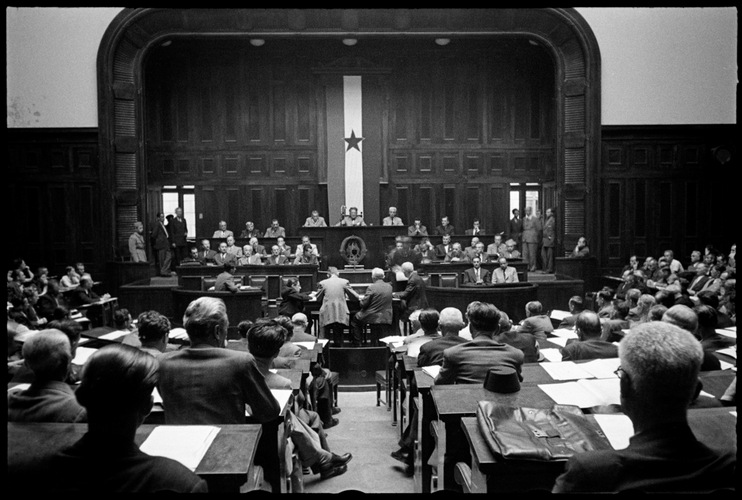

Table of Contents
Introduction
The New World envisioned by the Nazis collapsed with the defeat of the Axis in World War Two. Instead, a whole different world was about to be built with Communism as one of its pillars. As the war was ending, the red wave coming from the east was unstoppable, changing the political map of pre-war Europe along the way. The entire eastern part of the continent fell into the firm grip of Moscow, turning the countries in the region into de facto puppets of the Soviet Union. Such was the case with Yugoslavia, a monarchy known for its distinct anti-Soviet policy. Establishing post-war Yugoslavia turned the country into its total opposite - a faithful copy of the Soviet Union.
Yugoslavia, a flimsy monarchy
The Kingdom of Yugoslavia emerged as a result of the political rearrangements after the First World War. On the foundations of the Kingdom of Serbia and ruins of the Austro-Hungarian Empire, a new country was formed, the Kingdom of Serbs, Croats, and Slovenes. Later renamed Yugoslavia, the land of the South Slavs, it was a country of “three tribes of a single nation”, who strived to live under one roof. For 33 years of existence, however, the Kingdom of Yugoslavia was hardly a country of brotherly love.
Regent Alexander Karadjordjević, later the King of Yugoslavia, succeeded in making Yugoslavia but failed in creating Yugoslavs. The social, cultural, economic, and religious differences between the nations were a stumbling stone in trying to create a unified country and a nation. The turbulent political life in the country was marked primarily by a dispute between two leading nations, Serbs and Croats, on how a country should be constituted. Apart from it, the country was struggling with several other issues such as economic stagnation, separatist movements, political uproars, foreign threats, and many others.

Coat of arms of the Kingdom of Yugoslavia
Another threat to the political stability of the Kingdom of Yugoslavia was the Communist Party of Yugoslavia. From the very first days of the Kingdom, Yugoslav Communists aimed their activity at its destruction. It was a simple implementation of the Comintern agenda, which saw Yugoslavia as yet another instrument of the western Capitalists against the Soviet Union - an obstacle to the spread of the international communist revolution.
Because of disruptive activity, the Communist Party of Yugoslavia was outlawed in 1920. From then on, Communists carried out their anti-Yugoslav activity strictly from undercover. In their efforts to eliminate Yugoslavia, they went so far as to side with far-right organizations, otherwise their sworn enemies.
The war and the revolution
Communists only came to light in 1941. In April that year, forces of the Tripartite Pact attacked and overrun Yugoslavia in 12 days. The Germans and their allies annexed most of the country, while the Croats formed a state of their own, a puppet of Berlin and Rome.
Unlike the rest of occupied Europe, the Yugoslavs rose to arms soon after their army was defeated. The Royal government-in-exile called on the people to continue the fight. The resistance in Yugoslavia arose in early May 1941, already. In the years that followed, Yugoslavia became a theatre of an utterly complicated conflict. Two movements led the resistance against the occupying troops. These were the remains of the Royal Yugoslav Army (Chetniks) and units of the Communist Party of Yugoslavia (Partisans). Ideologically opposed, the two movements eventually confronted each other and started a civil war. Finally, in the fascist “Independent State of Croatia”, Serbs, regardless of their ideology, rebelled against the new regime and its policy of genocide.
For Communists, the war was a perfect opportunity to carry out the revolution and seize the power in the country. In the period briefly after the occupation, Communists were still silent. Only when, on June 22, 1941, Germany attacked the Soviet Union, their leader Josip Broz Tito began preparations for the uprising.
During the Summer and the Autumn of 1941, in a joint effort, Chetniks and Partisans liberated several smaller towns and villages in Serbia. The Germans responded with counter-offensive and horrible reprisals against the civilian population. Uprising collapsed, and Chetniks and Partisans split on the question of whether the fight should continue. Chetniks refrained from larger operations, not wanting to provoke further reprisals. Partisans, on the other hand, saw no other alternative but to fight. The revolution could not wait.

German prisoners in Užice, 1941
This moment was of great significance for the later course of events. Communists moved the center of their operations to Bosnia and gradually built an image of being the only force fighting the Axis in Yugoslavia. In a nation known for its glorious military past, communist propaganda was very successful in attracting people to their cause.
AVNOJ
As time passed, communist NOVJ (People’s Liberation Army of Yugoslavia) became a powerful resistance force, one that Germans seriously had to deal with. From 1943, Allied help, which by that time was distributed evenly to both Chetniks and Partisans, was redirected to support the Communist war effort only.
In autumn 1943 Italy surrendered. On the Eastern Front, the tides of war were turning in favor of the Soviets. Having a mighty force of Partisans to back up his actions, the time came for Tito to reveal his intentions of seizing power in Yugoslavia.
At the Second Session of AVNOJ (Antifascist Council for the National Liberation of Yugoslavia) on November 29, 1943, Communists declared the Council the highest representative body of legislative and executive power in the country. The new Yugoslavia, based on the right of self-determination, was projected as a federation of six federal units. King Peter II Karadjordjević was forbidden to return to the country and his government resolved all power. The question of monarchy was left to be decided on after the war. These decisions were the first and the most important step in establishing a communist Yugoslavia.

The Second Session of AVNOJ in Jajce, November 29, 1943
Decisions made at the AVNOJ session were approved by big powers at the Tehran Conference. In the eyes of the free world, Communists became legitimate representatives of the people of Yugoslavia. The Royal Government-in-exile, to whom Communists were nothing other than just rebels, now had their hands tied. The British, their patrons, recognized the communist government in Yugoslavia and there was nothing else for King Peter II to do but to offer Tito negotiations. It was the only way for him to try to save his throne and his country from becoming a Soviet republic.
Tito - Šubašić agreements
In June 1944, the new president of the Royal Government, Dr. Ivan Šubašić, arrived on the island of Vis, where Tito and the communist government, KNOJ (National Committee for the Liberation of Yugoslavia), were situated. Believing that his government still had some authority, Šubašić proposed that two members of NKOJ enter his government; King Peter II to be recognized as the supreme commander of armed forces; and that NOVJ collaborated with other resistance movements in the country.
Tito refused all the proposals. He was very well aware that his position in the country and abroad was much stronger. At the end of the negotiations, it was Šubašić who agreed on all proposals made by Tito. The Vis Agreement signed on June 16, 1944, obliged the Royal Government to recognize the Partisan movement and AVNOJ and condemn all those who have collaborated with the enemy. The government-in-exile also promised to call on all resistance fighters to place themselves under Tito’s control, including Chetniks. Regarding the political issues, Tito and Šubašić agreed that two members of the Government in London would join KNOJ and that people would decide the future polity of Yugoslavia after the war.
Tito had everything going according to his plans, even though he insisted that liberation of the country was his primary task. From January 1944, Partisan units started to move to Serbia. In the early summer of that same year, the Battle for Serbia began. Partisan units withheld the initial German attacks and moved into the offensive. On September 9, 1944, they crushed the Chetniks’ primary force. Three days later, King Peter II called on the remaining Chetniks to join Tito’s forces in efforts to liberate the country. Communists have won the first stage, the civil war! The success they achieved sparked the communists in other countries, like Greece, to go along the same path.

Tito and Šubašić on the Island of Vis
With Red Army troops approaching the eastern borders of Yugoslavia, Tito became certain there were no obstacles left to his plans for seizing power in Yugoslavia. Now that the Soviets were close, he turned his back to the British and unexpectedly left Vis for Moscow. In Moscow, Tito held a meeting with his patron, Joseph Stalin, making plans about the upcoming joint operations in Serbia. Certainly, the post-war establishment of Yugoslavia has also been one topic of the meeting. These days, Stalin held another important meeting. It was a meeting with British prime minister Churchill that resulted in the notorious “Percentages Agreement”. The two leaders agreed they would divide control over Yugoslavia by equal percentages, 50 to 50.
Upon his return, Tito again met Šubašić in the town of Vršac. They organized the meeting to complete the deal made at Vis earlier in June. Tito and Šubašić completed a deal on November 1, 1944, in Belgrade. They agreed they should form a new coalition government comprising 12 members of the KNOJ and 6 members of the Šubašić’s government. Tito was to be the head of the government and Šubašić his deputy and a minister of foreign affairs.
They later increased the number to 28 members, with the addition of another 10 members of KNOJ. With 3 out of 6 members of the Royal Government openly supporting Tito, the new government was anything but an equal coalition.
King Peter II nominally remained the head of state but was still denied a return to the country. Instead, a council of three regents was appointed to represent him in the country. Tito approved the regency just to please western Allies, but he did it only on the condition that two regents came from the ranks of KNOJ.
All the efforts of King Peter II to oppose and discredit the new government were futile. After four months of stalling, the pressure made by both the British and the Americans finally crushed King Peter II. In March 1945, he approved the Belgrade Agreement between Tito and Šubašić.
Kingdom on its deathbed
A few days later, on March 7, 1945, the government of Democratic Federal Yugoslavia was formed. Its primary task was the preparation of the election for the Constituent Assembly. With all the levers of power in the hands of Communists, there was little chance that their opponents would have a decent campaign. Opposition newspapers were banned and their leaders threatened in public. Communist-led list of the National Front of Yugoslavia (NFJ) ran a campaign backed up by a newly formed secret police (OZNA) that made sure any attempt of disputing the communist authorities was cut down in its roots. Communists were in the last stage of their plan and it was a favorable time to take the gloves off.

The Second Session of AVNOJ in Belgrade, November 29, 1945.
Speaking at the first congress of the National Front of Yugoslavia, Tito denounced the monarchy and rejected every possibility of its restoration. The Third Session of AVNOJ on August 7, 1945, made it completely clear that the monarchy was on its deathbed. King Peter II tried to oppose Tito by canceling the regency, but the government annulled King’s act. On the last day of the session, AVNOJ was transformed into a Provisional National Assembly. Šubašić and the other two members of his staff resigned from the government as a sign of protest that the country was sliding into a communist dictatorship.
Elections were held on November 11, 1945, with the NFJ as the only list. The Constituent Assembly gathered on November 29, 1945, in Belgrade. Its first and most important act was the Proclamation of the Federative People’s Republic of Yugoslavia (FNRJ). The regency was canceled and the monarchy overthrown. King Peter II was deprived of all royal rights. Yugoslavia became a republic, a voluntary union of equal nations.
Two months later, on January 31, 1946, the Constituent Assembly proclaimed the new Constitution of the FNRJ. The communists have finally won the war and the revolution. They added another red piece to the puzzle of the post-war map of Europe.
Sources
- SFRJ on Wiki
- Tito’s Yugoslavia
- Partisans: War in the Balkans 1941 - 1945
- How communists rose to power
Further reading
- Calic, Marie-Janine, and Dona Geyer. A History of Yugoslavia. Purdue University Press, 2019.
- Hudson, Kate. Breaking the South Slav Dream: The Rise and Fall of Yugoslavia. Pluto Press, 2003.
- Murray, Chris. Unknown Conflicts of the Second World War: Forgotten Fronts. Routledge/Taylor & Francis Group, 2019.
- Nikolic, Kosta, and Ivana Dobrivojevic. “Creating a Communist Yugoslavia in the Second World War.” Balcanica Balkanika, no. 48 (2017): 243-67. doi:10.2298/balc1748243n.
- Petranovic, Branko. Istorija Jugoslavije 1918-1978. Nolit, 1981.
- Petranović, Branko. Srbija U Drugom Svetskom Ratu: 1939-1945. Vojnoizdavački I Novinski Centar, 1992.
- Tomasevich, Jozo. War and Revolution in Yugoslavia, 1941-45. Stanford University Press, 1975.
